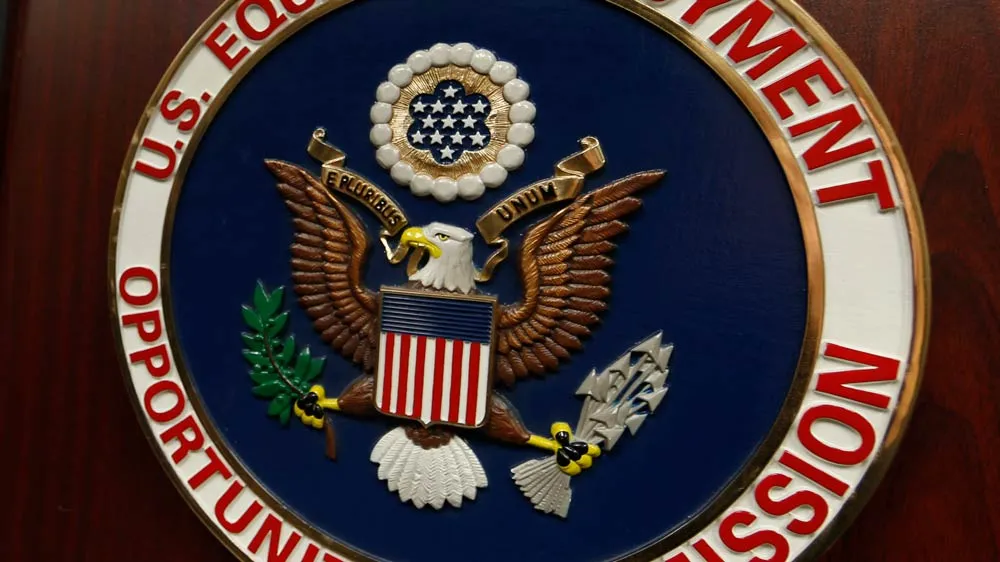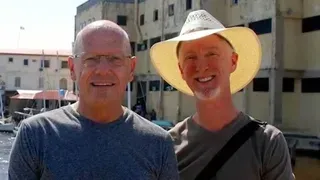August 14, 2014
Understanding Social Anxiety
Don Shewey READ TIME: 9 MIN.
What's the difference between fear and anxiety? Fear is a normal emotional response to a clear and present danger. Anxiety is the persistent experience of fear in the absence of threat.
I gleaned this succinct and useful distinction from Richard A. Friedman's front-page essay in the New York Times Sunday Review called "Why Teenagers Act Crazy." Friedman, a psychiatrist and professor who directs the psychopharmacology clinic at the Weill Cornell Medical College in New York City, summarizes recent research, suggesting that, "Largely because of a quirk of brain development, adolescents, on average, experience more anxiety and fear and have a harder time learning how not to be afraid than either children or adults."
Friedman notes that "the brain circuit for processing fear -- the amygdala -- is precocious and develops way ahead of the prefrontal cortex, the seat of reasoning and executive control. This means that adolescents have a brain that is wired with an enhanced capacity for fear and anxiety, but is relatively underdeveloped when it comes to calm reasoning."
Although we associate adolescence with an impulse toward adventure and novelty seeking in the name of rebellion and individuation, this risk-taking is not necessarily carefree. Apparently, adolescents have difficulty learning how not to be afraid. "While we have limited control over the fear alarm from our amygdala, our prefrontal cortex can effectively exert top-down control, giving us the ability to more accurately assess the risk in our environment. Because the prefrontal cortex is one of the last brain regions to mature, adolescents have far less ability to modulate emotions," writes Friedman.
"Fear learning lies at the heart of anxiety and anxiety disorders. This primitive form of learning allows us to form associations between events and specific cues and environments that may predict danger. Way back on the savanna, for example, we would have learned that the rustle in the grass or the sudden flight of birds might signal a predator -- and taken the cue and run to safety. Without the ability to identify such danger signals, we would have been lunch long ago. But once previously threatening cues or situations become safe, we have to be able to re-evaluate them and suppress our learned fear associations. People with anxiety disorders have trouble doing this."
Because of their relative difficulty in learning to be unafraid, adolescents may not be good candidates for exposure therapy or the use of stimulants like Adderall. "Stimulants, just like emotionally charged experiences, cause the release of norepinephrine -- a close relative of adrenaline -- in the brain and facilitate memory formation. That's the reason we can easily forget where we put our keys but will never forget the details of being assaulted."
Difficulty telling the difference between real and imaginary dangers isn't confined to teenagers, though. As I read and thought about Friedman's article, I immediately thought of two different adult gay male clients describing almost identical experiences of social anxiety. Both these men are smart, educated, attractive guys in their forties who have interesting jobs and are established in their fields (publishing and education). And yet both of them feel intensely uneasy walking into a party with other gay men.
Sandy* has been challenging himself to say yes to social invitations more often, so he forced himself to go to a friend's party but did so with considerable dread. As soon as he arrived at the party, he "knew" it wasn't going to be fun for him. Everyone knew everyone, he alone was the outsider. He stayed for an hour and then had to leave. At his job, he's conscientious, organized, motivated to do well, intelligent, experienced, sympathetic, reasonable, a good collaborator. He feels 75% comfortable at work. Where's that guy in social setting? He disappears, replaced by insecurities: How do I act, sound, look, behave? What can I say that would interest anyone?
Doug* struggles with similar issues of worthiness. He will happily engage with people who approach him in social settings, but can't bring himself to initiate contact because he can't imagine that he has anything to offer. At a recent social event, he had the impulse to flee early on, but in contrast to Sandy he was able to leave the room and find a private space to collect his thoughts. He realized that he was acting as if there was something deeply scary going on that he had to get away from. But he had to admit that there was no danger in the next room -- it was just a group of people hanging out, getting to know each other, and wanting to have a good time. By summoning his inner resources (that executive function Friedman ascribes to the prefrontal cortex) and accurately assessing the level of risk, he was able to expand his tolerance for braving the social environment longer. It takes practice, but it pays off.
We could say that both Sandy and Doug were caught in the grip of their inner teenager, highly sensitive to fear of rejection, the danger of social disapproval or scorn, and the belief that they would be unable to survive rejection or humiliation. It's as if every social encounter were an episode of "Project Runway," with a visible or invisible committee judging your every move and fully prepared to send packing anyone who doesn't make the grade.
Brain functioning tells part of the social anxiety story, but not the whole story. I was fascinated the following Sunday to read a letter to the editor in the New York Times responding to Friedman's article. The author, Robert Epstein, is a senior research psychologist at the American Institute for Behavioral Research and Technology. He's written a book called "Teen 2.0."
Epstein said: "Studies have shown that about half of American teenagers meet the criteria for some form of mental illness, including anxiety disorders, but I disagree with Dr. Friedman that this is largely because of the properties of a teenage brain. That is a myth perpetuated by a handful of researchers, some of whom are funded by the pharmaceutical industry, which has successfully created a huge new market for psychoactive drugs by promoting the faulty 'teenage brain' idea. In more than 100 cultures around the world, teenage turmoil is absent; such cultures don't even have a word for 'adolescence.' If the teenage brain were responsible for the turmoil of our teenagers, we would see it everywhere. We don't. The turmoil of our teenagers is due entirely to societal practices that infantilize young people and isolate them from responsible adults, trapping them in the frivolous, media-controlled world of 'teen culture.' Anthropological research also demonstrates that when Western schooling and media enter cultures where teenagers are highly functional, they typically take on all the pathological characteristics of American teenagers within a decade. The problem is our society, not the brain."
I'm a little dubious about Epstein's insistence that his theory "entirely" explains teenage turmoil, but I was grateful for his acknowledgement that cultural factors play a huge role in how social behaviors evolve. Here are some things I understand about social anxiety in adult gay men.
Almost every gay man spent many years of childhood and adolescence either actively suffering harassment, bullying, and abuse for being perceived as gay/effeminate/different, or spending considerable amounts of energy trying very hard not to be noticed in order to escape being harassed, bullied, or abused. For fear of being excluded, we became experts at excluding ourselves. That conditioning doesn't go away overnight. It takes a lot of time and growth and community-building and external affirmation to get comfortable showing yourself and being accepted as a sexual being. The ultimate goal is to be able to validate your own existence and not give so much weight to what other people think. That usually requires serious commitment to therapy, spiritual work, or some form of self-study.
It's not uncommon for gay men to put socializing on the back burner during their twenties and thirties and to spend all their energy during that time pursuing their professional or academic ambitions. By the time they're in their forties and fifties, they may well have established a solid professional identity, a sense of accomplishment, and considerable self-esteem -- but still feel underdeveloped in the emotional/sexual/romantic arena. It's not uncommon for men in that position to find socializing deeply awkward, embarrassing, or threatening because they feel highly self-conscious and often ashamed about their inexperience.
It's easy to look around a club or a party and assume that everybody else has superior social skills and feels perfectly at ease and sure of themselves. It's easy to forget that as gay men we all grew up watching the rituals of heterosexual courtship happening all around us in school and in movies and TV shows. We probably didn't get to experience the gay equivalent of adolescent flirtation, holding hands walking down the hall, sipping sodas through two straws, etc., so as adults we had to learn to go through those awkward stages of social contact. Every gay guy knows how clumsy and nerve-wracking that can feel. We know how it feels to be outside looking in. And our peers aren't nearly as judgmental about that as we might imagine they are. But you only learn that by getting out there and doing it, which takes courage and practice and support.
Then there's the social media, which has the potential to be a handy tool for meeting people and making connections, but just as often it turns out to be a shield to hide behind, to avoid contact. How many times have you been in a bar or a public place where the majority of the people around you are staring at their glowing screens rather than communicating with the people standing next to them? We've gotten so accustomed to indirect, mediated forms of communication (email, text, Facebook, Twitter, Instagram, Scruff, Grindr, Manhunt, Recon, Adam4Adam, etc.) that we've formed our most intimate relationships with our devices and grown strangely out of practice with direct approach and spontaneous interaction. After all, Candy Crush doesn't make fun of you. Netflix doesn't give you attitude. E-mail doesn't judge.
I see this in myself. Just the other day, I had a series of email and text-message exchanges with someone I haven't seen in a while trying to find time in our busy schedules to get together, go for a walk, have a conversation, and catch up. Then I ran into him at the gym unexpectedly. We could have had some conversation in the locker room. We could have arranged to have coffee right after working out. At the very least we could have seized this opportunity to make a date. Instead, we greeted each other warmly but awkwardly, went about changing clothes and working out, and even sat on opposite sides of the steam room. I realized afterwards that we were acting as if our real relationship existed in our mediated communication and casual face-to-face encounters were some kind of temporary distraction -- rather than the other way around.
This helped me to understand how easily social anxiety can sneak into our lives. It's astonishing how much stamina and mindfulness and tolerance for discomfort it can take to stay present in a social interaction without feeling like every momentary lull in the conversation is an agonizing silence or that you're in the glare of the spotlight and you're expected to put on a show. I'm thinking about my client Ralph*, who prefers communicating in writing because he's a perfectionist. He'll labor over each text message or email or G-chat, polishing and deleting and revising until he gets the words just right, which includes making it look like the message was casually tossed off. Then anxiety sets in when he has to meet someone in person that he's been flirting with on social media. Face to face, in real time, he feels pressure to live up to the witty banter he's been flinging around on his smartphone. If the conversation doesn't flow as easily as he thinks it should, his self-consciousness can spiral into feeling fraudulent, which doesn't make for a relaxing meet-and-greet. Paging Cyrano de Bergerac!
The split between the amygdala and the prefrontal cortex that Friedman talked about in his New York Times article doesn't automatically go away when you turn 21. It comes and goes all our lives, this challenge of learning not to be afraid, of summoning our executive control to see whether there's real danger nearby or unwarranted fear and then to calm the skittish teenager inside who doesn't know how to tell the difference.
That's obviously easier said than done for a lot of people. It takes practice. That's where taking a meditation class or joining a meditation group can be very helpful -- the process of slowing down, watching your mind wander off into the woods, and gently bringing it back instills good practice for expanding your tolerance for situations that cause anxiety. With practice, it gets easier and easier to stop yourself when you're going into a frenzy and consider: What am I afraid of? Am I really in danger, or am I really not? Most of the time when we fear that we're being judged negatively by other people, it's really our own harsh self-judgments that are causing our distress. Meditation can also help you learn and develop an attitude of kindness and compassion toward yourself.
There are other ways to work through social anxiety. Toastmasters is a popular approach, or any fellowship group that encourages people to get together and practice speaking openly in a social setting. Sometimes it takes medication and/or psychotherapy to dislodge old habits of being afraid. And sometimes maturity bestows its own blessing -- one of the great things about aging is that at a certain point you stop giving a shit what other people think. But the good news is that your organism is built to understand the difference between fear and anxiety.
[*Names and details are changed to protect confidentiality.]
Don Shewey is a writer, therapist, and pleasure activist in New York City. You can find him on the web at BodyandSoulWork.com. His email is [email protected]





